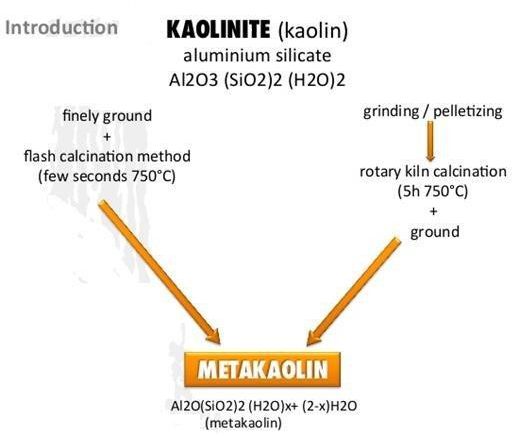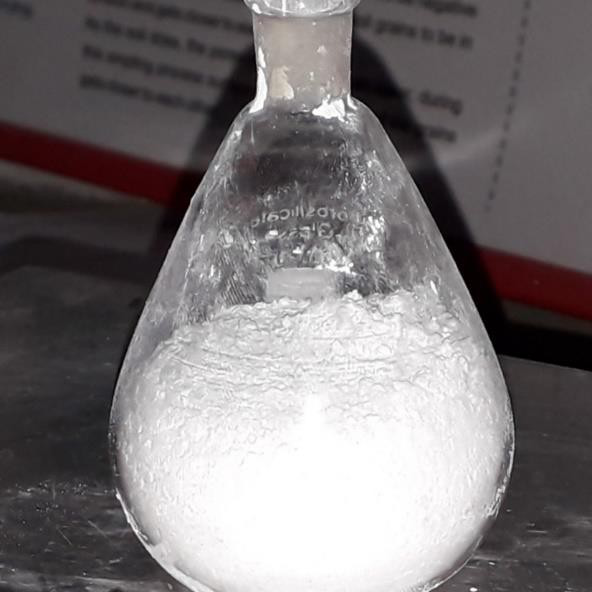

The work is related to compare the compressive strength of conventional concrete with the concrete cubes partially replaced by the supplementary materials known as metakaolin in various percentage of its replacement for cement in concrete. Various tests performed on cement, sand, aggregate is carried out as per Indian standard code. Also the testing for metakaolin has been passed out for its usage as a partial replacement for cement and found its cementitious property comparable. The concrete cubes are casted by performing a mix design as per IS 10262-2009. The concrete cubes with conventional concrete and with partial replacement with metakaolin were prepared for various percentage of replacement and the analysis was carried out on Compressive Strength machine and the result for compressive strength were evaluated. These results are then analyzed and are compared in graphical as well as in tabular form. Concrete is universally used material for construction. The worldwide production and usage of cement has greatly increased since 1991. Manufacture of cement results in an allocation of environmental pollution as it involves the making of CO2 gas. High quantity of cement used in concrete means high heat of hydration which cause cracks in concrete. Supplementary cementitious materials are thinly ground solid materials that are used to replace a part of cement in concrete mixture. These additional materials may be naturally taking place, industrial or artificial waste. Numerous types of pozzolanic materials that develop cement properties in cement industry for long time.
Metakaolin is a pozzolanic additive/product which can provide numerous specific features. Metakaolin is available in countless dissimilar varieties and qualities. The clarity will define the free lime. Some of them also give different reactivity. Metakaolin is a treasured admixture for concrete and or cement applications. The pozzolanic reaction starts at the time of mixing, continues between 7 to 28 days. Metakaolin is a dehydroxylated aluminium silicate. It is an unstructured non glassy material, constituted of lamellar particles. From the current investigate works using Metakaolin, it is apparent that it is a very energetic pozzolanic material and it successfully improves the strength parameters of concrete. Cement partialiy replace by metakaolin. It reacts with Calcium hydroxide is another the by-products of hydration reaction of cement and results in extra Calcium-Silicate-Hydrate gel gel. The Calcium-Silicate-Hydrate gel improved the strength. Metakaolin is achieved by thermal stimulation of kaolin clay. This activation of extra c-s-h gel will origin an extensive loss of water in its composition causing a reorganization of its structure. To obtain an enough thermal activation, the temperature range should be recognized between 600o to 750ºC. Partial replacement of cement by Metakaolin reduces carbon dioxide emissions, also increases the life of buildings. The cautious program was intended to investigate metakaolin as a partial replacement with cement was done at 5%, 10%, 15%. The sample was casted with M20 grade of concrete with different replacement quantity of metakaolin.
2.1 Materials used
Cement: Ordinary Portland Cement (OPC) of 53 Grade was used all over the experimental investigation. The brand of cement used was Ambuja OPC with grade 53. The cement is well powdered and color was grey and free from lumps. The specific gravity of cement obtained is 3.15.
Metakaolin: Metakaolin used in this investigational work was obtained from the supplier Gautam Dyes & Chemicals, Banglore. The specific gravity is 2.44.


|
Chemicals |
Cement (%) |
Metakaolin (%) |
|
SiO2 |
19.41 |
62.61 |
|
Al2O3 |
4.82 |
28.62 |
|
Fe2O3 |
3.41 |
1.06 |
|
MgO |
2.81 |
0.16 |
|
CaO |
65.42 |
0.07 |
|
Na2O |
0.22 |
1.58 |
|
K2O |
- |
3.47 |
|
TiO2 |
- |
0.37 |
|
LOI |
1 |
2 |
|
SO2 |
3 |
- |
3.1Method Adopted
1.Various Properties of concrete ingredient i.e., cement, fine aggregates (sand), coarse aggregates and Metakaolin were determined by carrying out various tests.
2.As per IS: 10262- 2009 concrete mix of M20 Grade, which was used as reference mix.
3.Partially replacement of cement by Metakaolin at 5%, 10% and 15%.
4.Six sample cubes casted for each changeable percentage of Metakaolin at 7, 14 and 28 days was tested.
5.Total 24 cube was casted and curing was done.
6.Compressive strength test was done at 7, 14 and 28 days.
3.2Specimen Details
Cube specimen of size 0.15m x 0.15m x 0.15m were casted to study the hardened properties of concrete such as compressive strength. Mix notations 3.3Mix Proportions
The prepare mix of M20 grade of concrete is cast. The design is based on IS 10262-2009. The quantities obtained for per cubic meter from this design. The quantities were tabulated in table 1. C- Conventional mix, M1- 5% metakaolin , M2- 10% metakaolin , M3- 15% metakaolin.
|
Sr no. |
Material |
Units |
Material quantities |
|||
|
C |
M1 |
M2 |
M3 |
|||
|
1 |
Cement |
Kg |
394 |
411.73 |
411.73 |
411.73 |
|
2 |
Metakaolin |
Kg |
0 |
21.67 |
43.34 |
65 |
|
3 |
Fine aggregate |
Kg |
645.46 |
631.18 |
629.75 |
627.40 |
|
4 |
Coarse aggregate |
Kg |
1069.89 |
1046.21 |
1043.85 |
1040.50 |
|
5 |
Water |
Lit. |
197 |
197 |
197 |
197 |
From then present investigation of partial replacement of cement with Metakaolin in concrete is as follows;
•The strength of every single one Metakaolin mixe is more as compared to strength of Pure OPC.
•15% replacement of cement by Metakaolin is higher to all other mixes.
•The increase in Metakaolin quantity increases the Compressive strength up-to 15% replacement.
•It can be done that the addition of Metakaolin increases the resistance to acid attack of HPC. Most advantageous results obtained were at 15% replacement of cement by Metakaolin.
•By varying the percentage replacement of cement by Metakaolin 13%, 19% and 22% of increment in strength as compared to Pure OPC is achieved at 7, 14, and 28 days respectively.
By Mohd. Atif
Branch: Asst Prof. Civil Engineering,